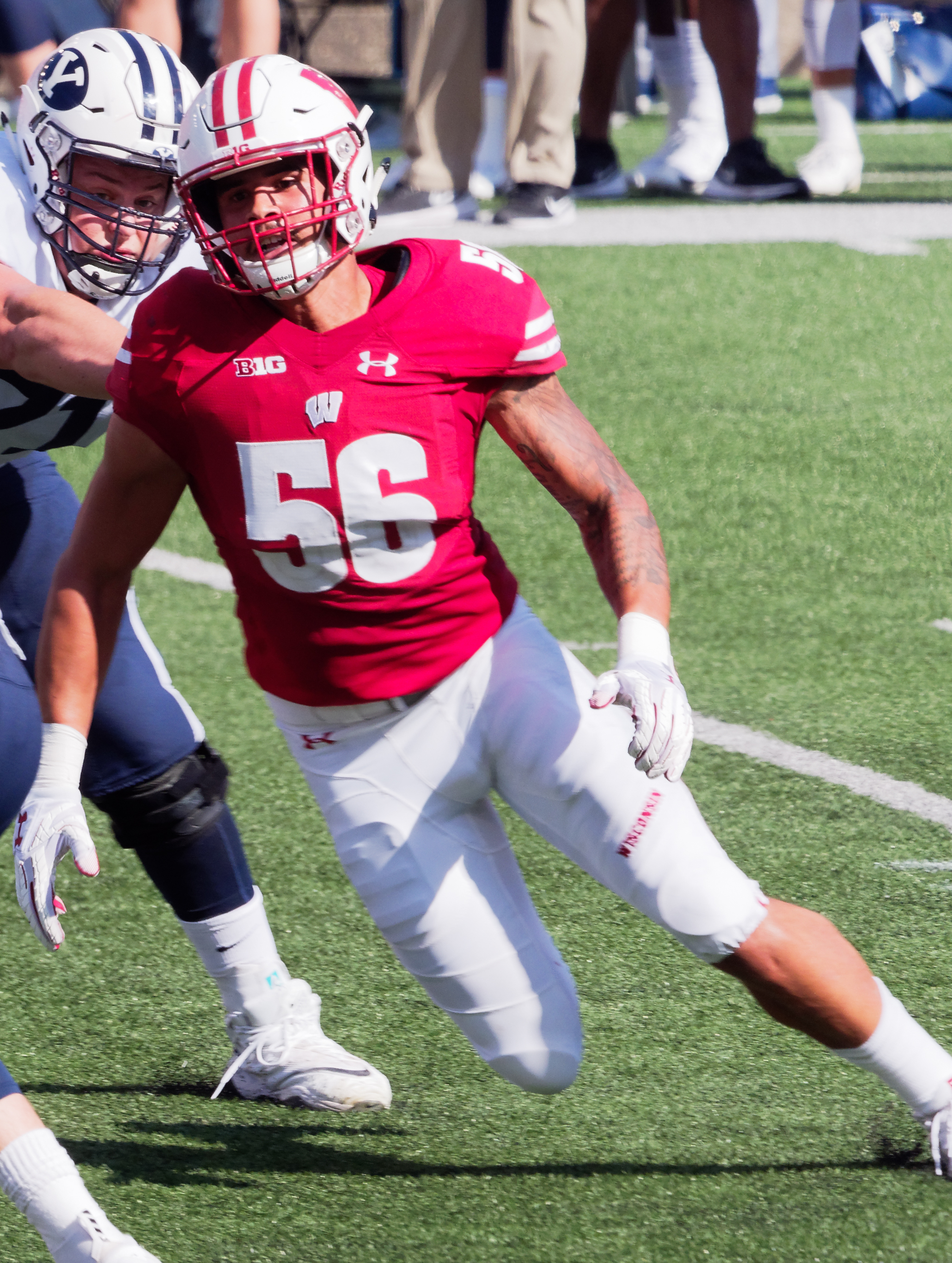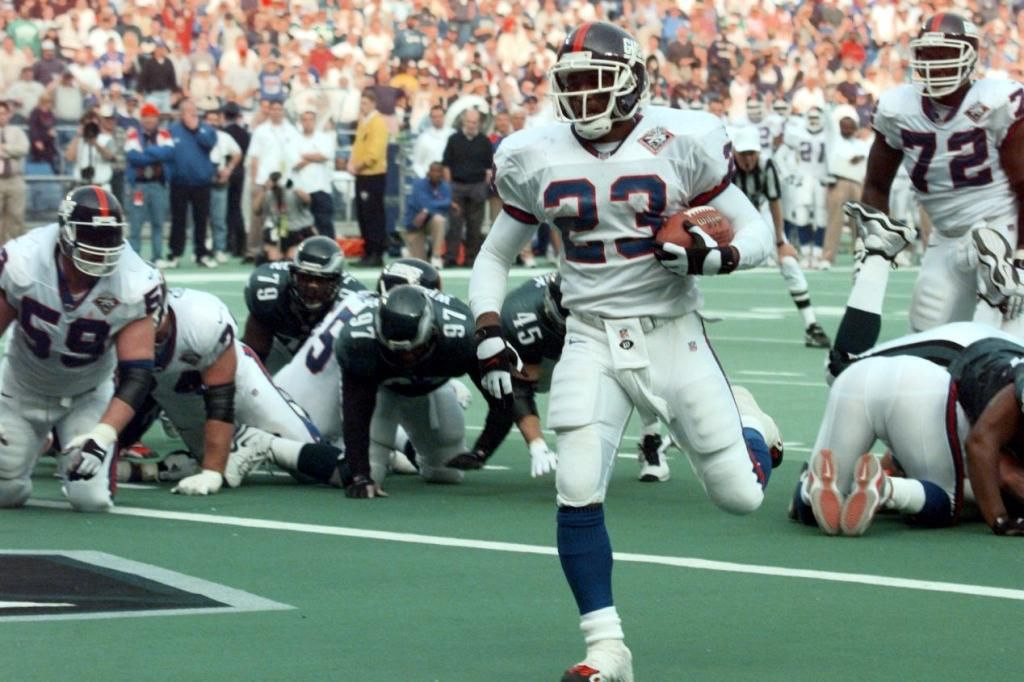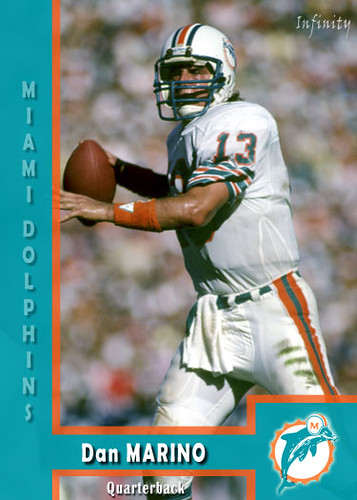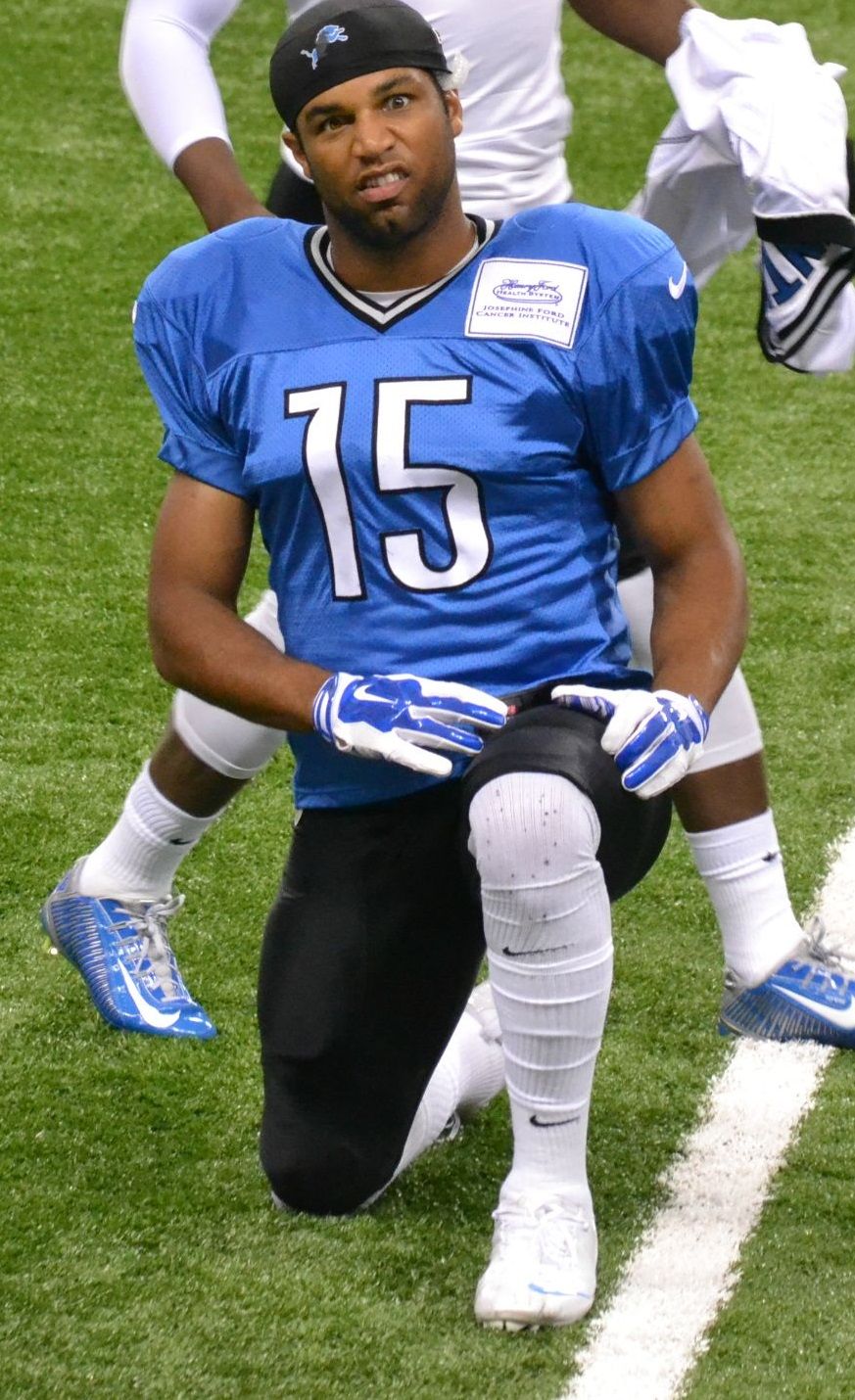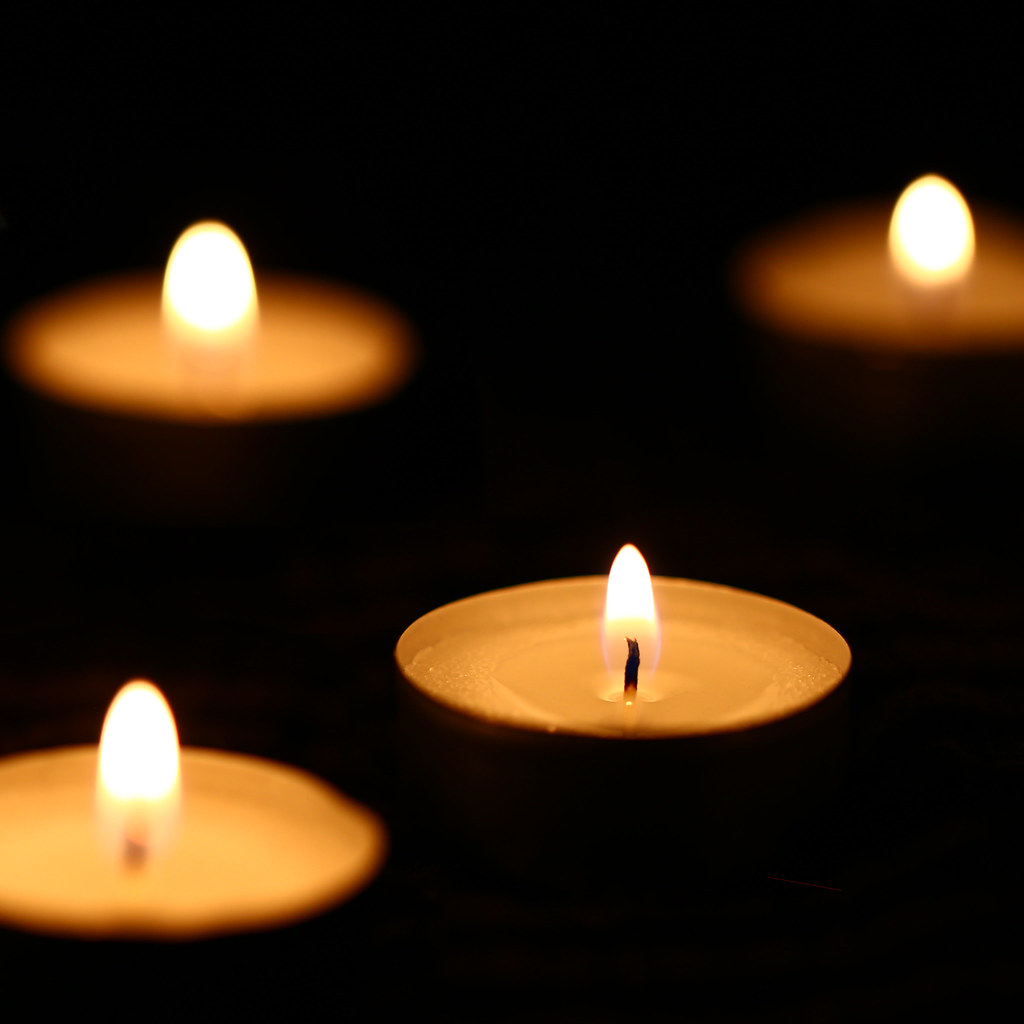
In the annals of Philadelphia’s storied history, few figures have cast a shadow as wide and as benevolent as James Joseph Murray. Known widely as Jim Murray, the former general manager of the Philadelphia Eagles and a pivotal co-founder of the globally recognized Ronald McDonald House Charities, passed away on Monday at his home in Bryn Mawr, Pa., at the age of 87. His death, announced by the Eagles, marks the end of a remarkable life dedicated equally to the high-stakes world of professional football and the profound mission of humanitarian service.
Mr. Murray’s journey was characterized by a rare blend of strategic acumen in sports management and an unwavering commitment to philanthropy. He was a driving force behind the Philadelphia Eagles’ resurgence, leading the team to their first Super Bowl appearance in 1981, a testament to his leadership and vision. Yet, it was his groundbreaking work in establishing the first Ronald McDonald House in Philadelphia in 1974 that earned him enduring renown and gratitude far beyond the gridiron, touching countless lives by providing solace and support to families facing the gravest challenges.
His passing on August 25, 2025, resonates deeply within the communities he served, from the passionate fan base of the Eagles to the vast network of individuals whose lives have been positively impacted by the ‘McMiracle’ he helped orchestrate. This article will delve into the initial chapters of his extraordinary life and the formative years of his most celebrated philanthropic endeavor, exploring the foundational moments that defined a man whose legacy is etched in both sporting triumphs and compassionate care.
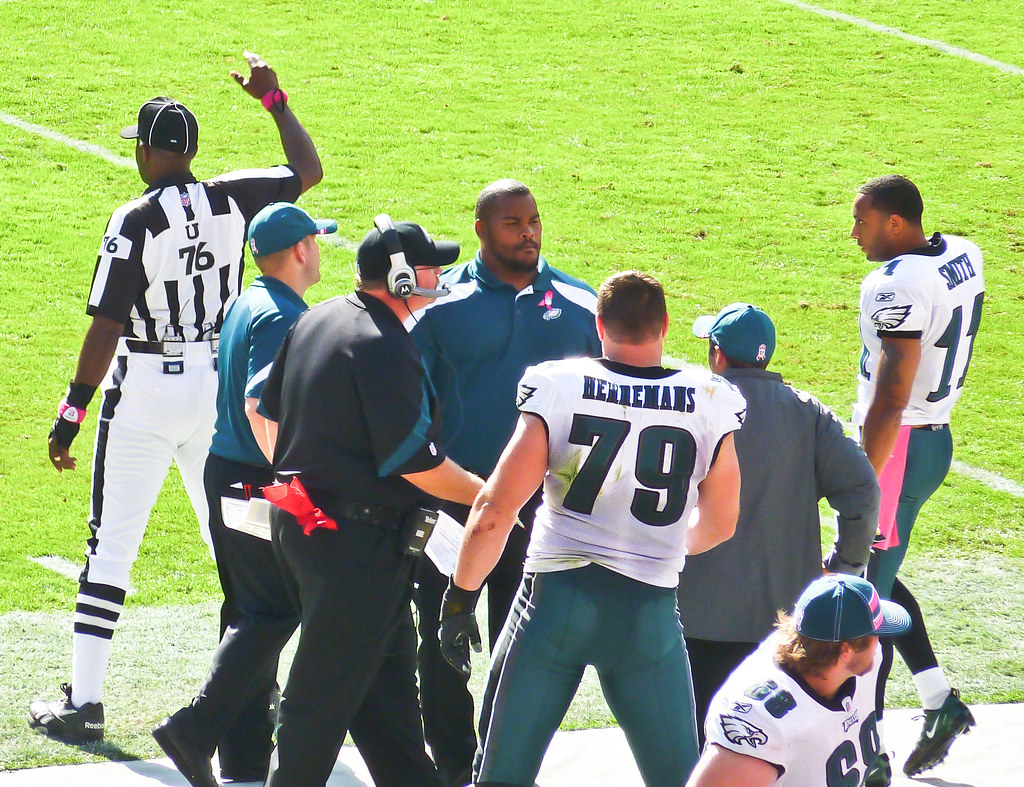
1. **General Manager of the Philadelphia Eagles: A Transformative Tenure**Jim Murray’s professional trajectory took a significant turn in 1974 when, at the relatively young age of 36, he was appointed general manager of the Philadelphia Eagles. This promotion placed him at the helm of an organization that had, for years, struggled to find its footing, enduring a prolonged period without a single winning season between 1966 and 1978. His arrival signaled a crucial turning point, setting the stage for a dramatic revitalization of the team’s fortunes.
Before ascending to the general manager role, Mr. Murray had honed his skills in public relations, a background that undoubtedly informed his strategic approach to rebuilding the franchise. He had joined the Eagles’ public relations office in 1969, demonstrating an innate ability to connect with people and manage perceptions, which proved invaluable in his new leadership capacity. This experience equipped him not only with communication prowess but also with an understanding of organizational dynamics critical for a turnaround.
His tenure as general manager, spanning from 1974 to 1983, became synonymous with a period of renewed hope and competitive success for the Eagles. He was tasked with the challenging mission of transforming a ‘moribund’ team into a contender, a goal he pursued with relentless determination and strategic foresight. This era would ultimately see the Eagles rise from the depths of consistent losing to the pinnacle of the NFC, culminating in their historic Super Bowl appearance.
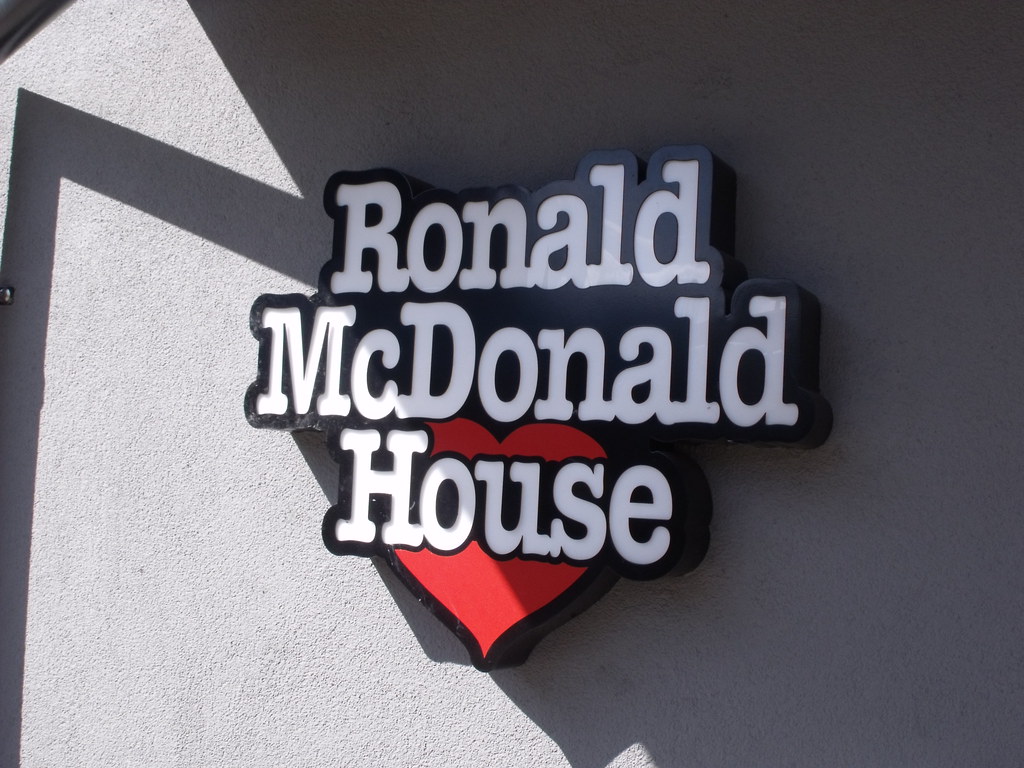
2. **Co-Founding the First Ronald McDonald House: A Vision of Compassion**Beyond the roar of the football stadium, Jim Murray’s legacy achieved perhaps its most profound resonance through his pioneering role in co-founding the first Ronald McDonald House. This initiative, born from a deep-seated empathy, would grow into a global network providing essential support to families navigating the unimaginable ordeal of a child’s serious illness. It was in this capacity that Mr. Murray truly earned his ‘most renown in his native Philadelphia,’ showcasing a dedication to humanitarian service that paralleled his professional achievements.
Mr. Murray was described as a ‘charitable entrepreneur,’ a fitting title for someone who not only identified a pressing social need but also possessed the drive and ingenuity to build a sustainable solution from the ground up. He was not merely a figurehead but an active participant in conceptualizing and realizing the vision of a ‘home away from home’ for families. This endeavor demonstrated his unique ability to leverage community resources and rally support for a cause close to his heart.
The first Ronald McDonald House, established in Philadelphia in 1974, laid the groundwork for what would become Ronald McDonald House Charities (RMHC), an organization now boasting ‘more than 385 facilities’ in some ’60 other countries.’ These houses are designed to offer ‘accommodations and other resources near medical centers’ for families whose children are battling severe illnesses, alleviating the burden of lodging and allowing parents to focus on their child’s health. This transformative idea, initiated by Murray, continues to provide critical solace and practical assistance worldwide.

3. **The Inspiration: Fred Hill’s Daughter, Kim: A Child’s Battle, a Movement’s Spark**The genesis of the Ronald McDonald House can be traced directly to a deeply personal and heartbreaking situation involving Fred Hill, a tight end with the Philadelphia Eagles. In 1969, Hill’s then 3-year-old daughter, Kim, received a devastating diagnosis of acute lymphatic leukemia, with doctors initially giving her a prognosis of just six months to live. This dire news galvanized the Eagles community and, crucially, inspired Jim Murray to seek a meaningful way to provide support.
Kim Hill’s courageous battle required years of intensive treatment, often at St. Christopher’s Hospital for Children, highlighting the immense strain placed on families with seriously ill children. Her father, Fred, retired from football in 1971 but remained committed to fighting for a cause that had become intimately personal. He worked with the Eagles and owner Leonard Tose to organize a fundraiser for leukemia research, an event that proved to be ‘wildly successful.’
Following the success of this initial fundraiser, Leonard Tose recognized the need to sustain and expand this benevolent impulse. He ‘tasked Murray with raising more funds for the cause,’ effectively delegating Mr. Murray to ‘prolong the giving by looking for a related charitable cause.’ This pivotal assignment channeled Murray’s inherent compassion and entrepreneurial spirit toward identifying the most pressing needs of families like the Hills, ultimately leading him to Dr. Audrey Evans and the groundbreaking concept of a dedicated family accommodation.

4. **Collaboration with Dr. Audrey Evans: The Medical Visionary and the Practical Solution**As Jim Murray embarked on his mission to identify a related charitable cause for the Eagles’ fundraising efforts, he sought out medical expertise. This quest led him to a pivotal meeting with Dr. Audrey Evans, a local pediatric oncologist at Children’s Hospital of Philadelphia (CHOP), who would become his fellow co-founder of the Ronald McDonald House. Dr. Evans, who later passed away in 2022 at the age of 97, provided the crucial clinical insight into the families’ unmet needs.
Dr. Evans candidly informed Mr. Murray that while fundraising for research was vital, an immediate and pressing humanitarian need existed: providing suitable accommodation for parents of sick children undergoing treatment. She observed firsthand that ‘the parents of children battling cancer have no where to stay while their child is in the hospital for treatment.’ Often, these exhausted parents were forced to ‘sleep in the corridor or in their cars,’ a stark reality that deeply resonated with Murray.
Mr. Murray grasped the gravity of the situation instantly. His godson, Philadelphia sports broadcaster Rob Ellis, recounted, ‘He saw the way they were struggling and said, ‘We have to figure something out.’’ Interestingly, Dr. Evans’s initial request was quite modest; as Murray recalled, ‘When Dr. Evans challenged me to get a house, she didn’t want a house, she wanted a room at the Y.M.C.A.’ It was Murray’s grander vision and Philadelphia pride that propelled the idea beyond a single room to an entire dedicated house.
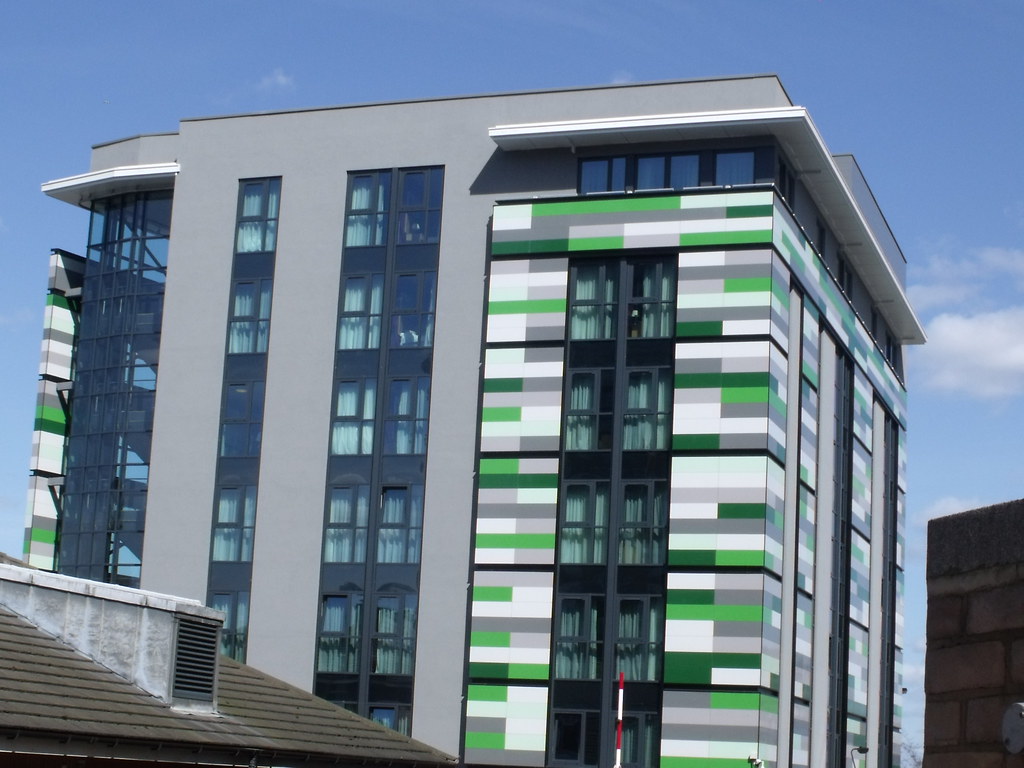
5. **The ‘McMiracle’: Securing Funding and Naming the House**With the critical need for family accommodation clearly identified, Jim Murray, ever the ‘charitable entrepreneur,’ turned his attention to securing the significant funding required to bring Dr. Evans’s vision to fruition. He made a strategic move by reaching out to a Philadelphia advertising executive who managed the region’s McDonald’s account, recognizing the potential for a powerful corporate partnership to support the burgeoning initiative. This outreach proved to be a stroke of genius.
Murray learned that McDonald’s was preparing for its St. Patrick’s Day promotion, featuring the popular Shamrock Shake. Seizing the opportunity, he proposed a simple yet impactful partnership: McDonald’s would ‘donate 25 cents for each shake sold to help pay for the house.’ This proposition presented a mutually beneficial arrangement, allowing the fast-food giant to contribute to a worthy local cause while enhancing its public image.
The response from a McDonald’s executive, Ed Rensi, was nothing short of miraculous, as Murray himself recounted: ‘‘What if we give you all the money? Can we call it the Ronald McDonald House?’’ Murray’s reply, delivered with characteristic pragmatism, was decisive: ‘I said, ‘If you give us all the money, you can call it anything you want to.’ That was the spark of the miracle right there.’ This agreement not only secured the full funding but also lent the now-iconic name to the charity, which Murray affectionately began to call the ‘McMiracle.’
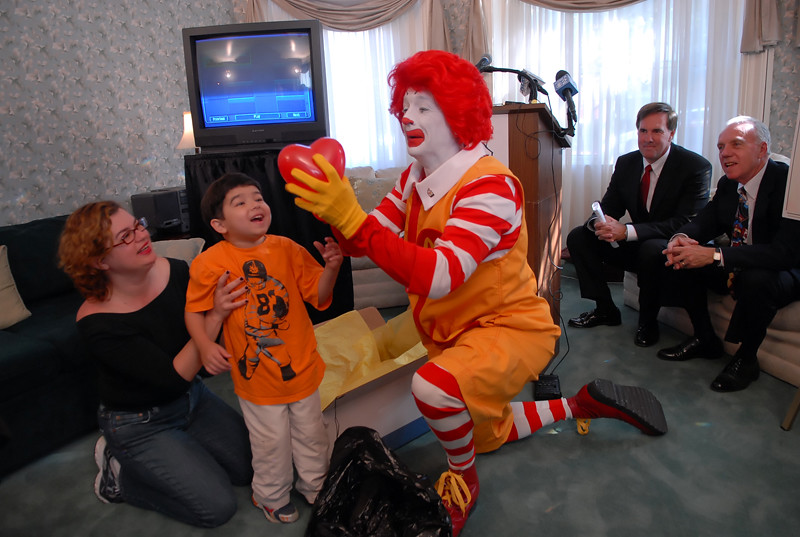
6. **The Opening of the First Ronald McDonald House: A New Beginning in Philadelphia**The culmination of Jim Murray’s tireless efforts, combined with the medical vision of Dr. Audrey Evans and the crucial financial backing from McDonald’s, arrived on October 15, 1974. On this historic day, the world’s first Ronald McDonald House officially opened its doors at 4032 Spruce Street in Philadelphia. This landmark event marked a pivotal moment in humanitarian aid, establishing a precedent for family-centered care in pediatric oncology.
The inaugural facility, purchased for ‘$42,000,’ was modest in its initial scale, providing ‘room for seven families.’ Yet, its impact was immeasurable, offering a much-needed sanctuary for parents who had previously faced the harsh reality of sleeping in hospital corridors or their vehicles. This tangible demonstration of community support immediately began to alleviate a significant burden for families already under immense emotional stress, allowing them to remain close to their children during critical treatment periods.
The opening of this first house was more than just the establishment of a charitable institution; it was the birth of a global movement. It embodied the principle that ‘people took care of each other,’ a value Jim Murray often referenced from his own West Philadelphia upbringing. This single house, a direct response to the suffering of children like Kim Hill, became the blueprint for an international network, testifying to the enduring power of compassion and collaborative action initiated in Philadelphia.
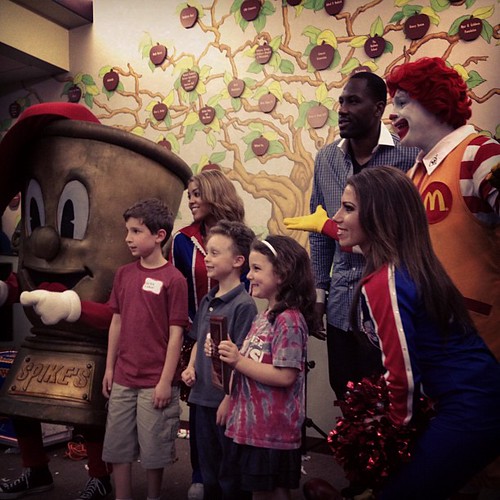
7. **Jim Murray’s Broader Impact and Personal Character: A Legacy of Service**While Jim Murray’s achievements as the Eagles’ general manager and co-founder of the Ronald McDonald House are individually profound, they collectively paint a portrait of a man driven by a deep-seated commitment to service. His godson, Rob Ellis, profoundly captured this essence, stating, ‘The best way I would describe him is selfless. He was someone who dedicated his entire life to service and helping others.’ This ethos permeated every aspect of his professional and personal life, defining his interactions and motivations.
Mr. Murray’s selflessness was not merely anecdotal; it was a consistent thread woven through his actions. Ellis further emphasized that unlike many who offer superficial assistance, ‘That wasn’t him.’ He genuinely cared for people ‘on a level that was just different,’ regardless of their background, race, or socioeconomic status, ensuring ‘he didn’t want anybody to feel like they were alone.’ This unwavering empathy extended to all corners of his life, from supporting a struggling owner to comforting families in distress.
Reflecting on his role in founding the Ronald McDonald House, Mr. Murray articulated his philosophy with characteristic humility and insight. He remarked that the charity was ‘no more than ‘putting people together that can hold hands, hold hearts and say, you know what, we’re on defense, but you can’t win without a good defense.’ ‘ This perspective encapsulated his ability to rally individuals around a common, compassionate cause, viewing collective human connection as the most potent form of defense against life’s challenges. His legacy is one of bringing people together to build something far greater than themselves.
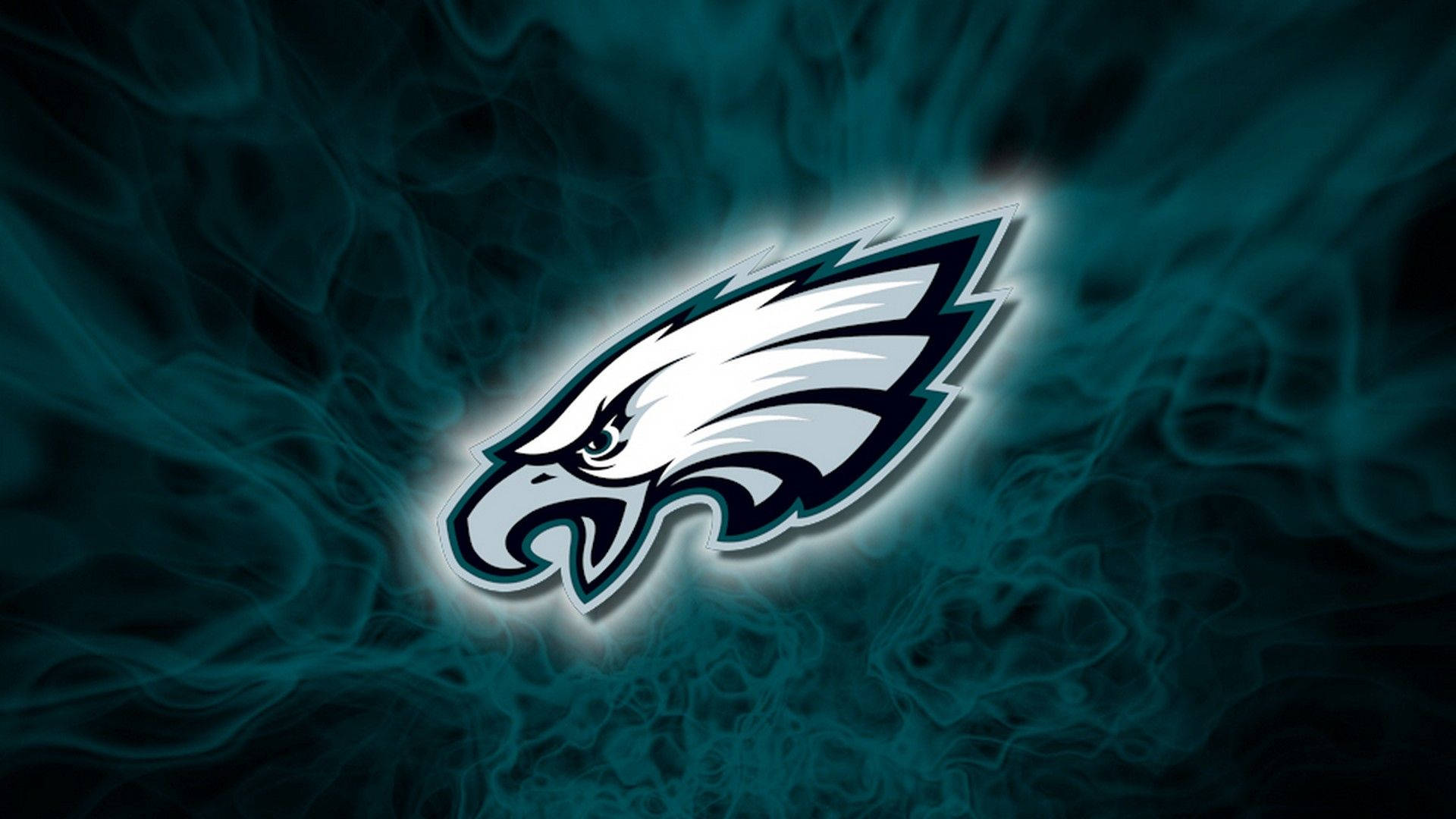
8. **The Eagles’ Ascendance: The Vermeil Era and Playoff Success**Jim Murray’s strategic vision extended significantly to personnel decisions, most notably the recruitment of Dick Vermeil. In 1976, Mr. Murray successfully persuaded the Eagles’ erratic trucking-magnate owner, Leonard Tose, to hire Mr. Vermeil, who was then the highly successful head football coach at the University of California, Los Angeles. This decision proved to be a watershed moment for the franchise, injecting new energy and a winning mentality into a team that had long languished in mediocrity. Vermeil, known for his intense coaching style and ability to inspire, quickly began to reshape the team’s prospects.
Under Vermeil’s leadership, and with Murray’s astute backing, the Eagles embarked on a significant rebuilding phase. Mr. Vermeil made strategic acquisitions, bringing in top players who would become instrumental to the team’s resurgence. By 1978, just two years after Vermeil’s arrival, the Eagles had achieved a playoff berth, signaling a dramatic turnaround for a team that had endured more than a decade without a single winning season. This marked a profound shift in the team’s trajectory, validating Murray’s bold leadership and his ability to identify and empower talent.
The culmination of this revitalization came in 1981, when the Philadelphia Eagles reached their first-ever Super Bowl, Super Bowl XV. This historic appearance against the Oakland Raiders was a testament to the transformative leadership of both Murray and Vermeil, who had successfully guided the team from ‘moribund’ to the pinnacle of the NFC. Despite the team’s impressive journey to the championship game, they ultimately fell short, losing to the Raiders 27-10. Mr. Murray, with his characteristic candor, later remarked of that game that the Eagles had “peaked at the national anthem,” a sentiment that captured the team’s bittersweet performance on the grandest stage.
9. **Departure from the Eagles: A Difficult Transition**The period following the Super Bowl appearance brought significant changes to the Eagles organization, culminating in Jim Murray’s departure from his general manager role. In 1982, head coach Dick Vermeil, citing burnout from the intense pressures of professional football, resigned from his position. This created a void in leadership that soon impacted Murray’s own tenure, as the team’s fortunes began to falter again, exacerbating underlying financial issues within the franchise.
By 1983, Mr. Murray was fired by owner Leonard Tose and his daughter, Susan Fletcher, who served as the team’s vice president. This decision was largely driven by pressing cost-cutting measures, necessitated by the team’s increasingly precarious financial state. The parlous condition of the Eagles’ finances was, in large part, attributed to Mr. Tose’s escalating gambling addiction, which had accumulated substantial debts. The departure marked an end to an era of both significant sporting success and profound philanthropic innovation for Murray within the Eagles organization.
Despite the professional separation, a testament to Murray’s unwavering character and loyalty emerged in the years that followed. The financial challenges faced by Leonard Tose deepened significantly, with the owner accruing more than $25 million in gambling debts by the time he sold the team two years later. This led to Mr. Tose residing in a downtown hotel, a stark contrast to his previous affluence. In a powerful demonstration of his compassion, Mr. Murray and others continued to support Mr. Tose financially during these trying times, showcasing a personal bond that transcended professional disagreements and personal slights.
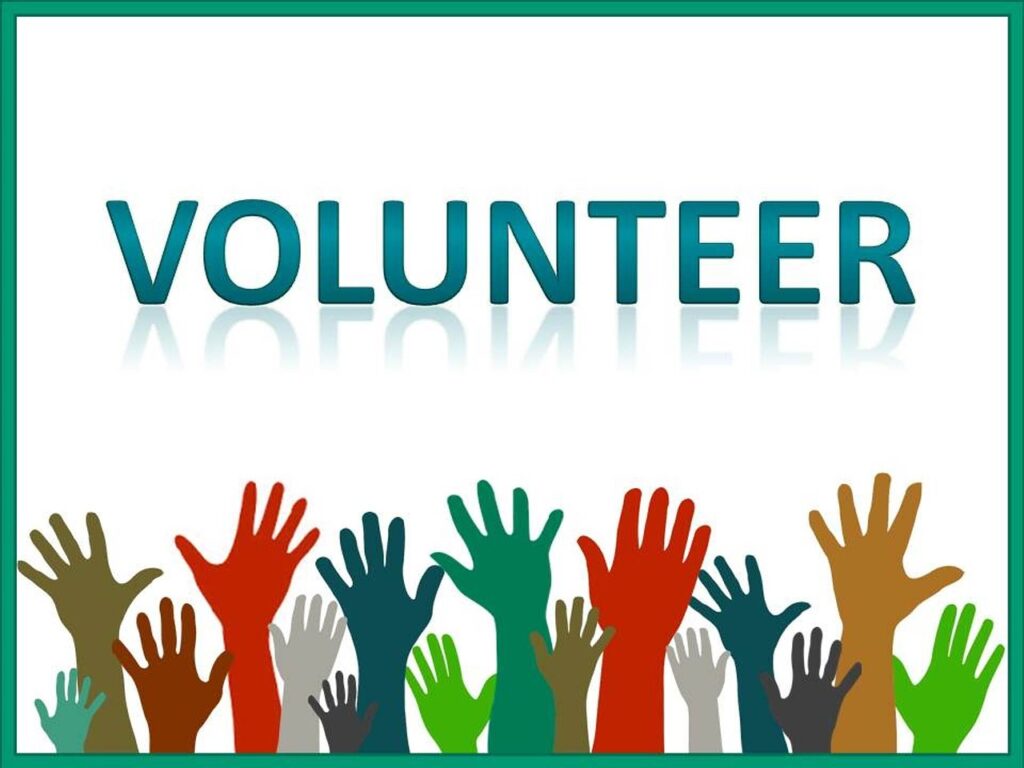
10. **An Unwavering Character: Empathy and Selflessness in Action**Beyond his remarkable professional accomplishments in both football management and groundbreaking philanthropy, Jim Murray was consistently described as a man of extraordinary character, distinguished by his profound selflessness and unwavering empathy. His godson, Rob Ellis, offered a poignant description of Murray’s nature, stating, “The best way I would describe him is selfless. He was someone who dedicated his entire life to service and helping others.” This dedication was not a superficial gesture but a deeply ingrained aspect of his personality, guiding his every interaction and decision.
Mr. Murray’s profound compassion extended indiscriminately to all individuals, irrespective of their background, race, or socioeconomic status. Mr. Ellis further elaborated that Murray genuinely cared for people “on a level that was just different,” emphasizing his desire that “he didn’t want anybody to feel like they were alone.” This innate human connection manifested in numerous anecdotes, such as the time he encountered a Black woman dining alone in a restaurant and convinced her to join him and his wife, illustrating his intrinsic desire to include and comfort others.
Laura Van Tassell, the director of development for the Ronald McDonald House Charities of Philadelphia, also attested to Murray’s exceptional nature, describing him as “one of the most generous men, with the most gracious heart that I ever had the pleasure of meeting.” This underscores the deep and positive impact he had on those around him. His consistent support for Leonard Tose in his later struggles, despite having been fired by him, stands as another powerful example of Murray’s unwavering loyalty and commitment to human welfare, even in the face of personal slight and professional adversity.

11. **Early Life and Formative Years: Roots in West Philadelphia**James Joseph Murray’s foundational values and compassionate spirit were deeply rooted in his upbringing in West Philadelphia. Born on June 5, 1938, he was one of four children to Jim Murray, a food services worker at the University of Pennsylvania, and Mary (Kelly) Murray. This Irish Catholic neighborhood, though characterized by economic hardship, instilled in him a powerful sense of community and mutual support, which he often credited for shaping his enduring worldview.
Mr. Murray’s educational journey began in parochial schools, reflecting his family’s deep faith, and culminated in his graduation from West Catholic High School in 1956. During his youth, he briefly attended a seminary, a detail that further highlights the influence of his Catholic upbringing and a potential early inclination towards a life of dedicated service. He often reminisced about his childhood, stating that while they were “poorer than poor,” they were “richer than rich” because “people took care of each other.” These early lessons in solidarity clearly informed his later philanthropic endeavors.
His intellectual pursuits led him to Villanova University, where he graduated in 1960 with a bachelor’s degree in English. At Villanova, he began his engagement with sports administration, serving as the manager of the baseball team. Following his graduation, Mr. Murray served in the Marine Corps Reserve, adding a period of disciplined service to his early career. He then gained experience working in management for minor league baseball teams before returning to his alma mater in 1966 to serve as sports information director, setting the stage for his eventual entry into the National Football League.

12. **Post-Eagles Career and Continued Public Service**Following his departure from the Philadelphia Eagles in 1983, Jim Murray did not retreat from public life or his profound commitment to service. Instead, he channeled his extensive experience in sports administration and public relations into new ventures, further solidifying his diverse professional footprint. He founded a public relations and sports marketing firm, leveraging his established network and expertise to continue contributing to the professional landscape of Philadelphia and beyond.
Crucially, his professional transitions never diminished his profound involvement with the Ronald McDonald Houses. Even after his tenure with the Eagles concluded, Mr. Murray remained deeply connected to the charity he helped bring to life, continuing to advocate for and support its vital mission. This sustained dedication underscored his belief that the Ronald McDonald House was more than just a project; it was a deeply personal mission that he viewed as his “personal Super Bowl,” a sentiment that encapsulates the depth of his lifelong commitment.
His philanthropic endeavors also extended to other vital initiatives, notably the Eagles Fly for Leukemia campaign. This highly successful program, which he helped launch, was dedicated to supporting research for a cure for leukemia and assisting families in coping with the emotional and physical traumas associated with a cancer diagnosis. Through his ongoing work with the Ronald McDonald Houses and his continuous involvement in the Eagles Fly for Leukemia, Murray consistently demonstrated his enduring commitment to alleviating suffering and fostering community support for those facing life’s gravest challenges.

13. **A Devoted Family Man: The Personal Side of Jim Murray**While Jim Murray’s public persona was defined by his groundbreaking achievements in football and philanthropy, his private life was anchored by a devoted family. In 1967, he married Dianne Harrison, who remained his beloved wife and partner throughout their many years together, providing a steadfast foundation for his ambitious professional and charitable pursuits. This personal stability often underpins such expansive public service, enabling individuals to dedicate themselves fully to their broader missions.
Together, Jim and Dianne built a large and loving family, a testament to his values and commitment beyond the professional sphere. They were blessed with five children: two daughters, Karin Davidson and Amy Murray, and three sons, Jimmy IV, Brian, and John Paul. This extensive family was a source of profound joy and support for Mr. Murray, illustrating that his capacity for care and dedication extended deeply into his personal relationships, mirroring the empathy he showed in his public life.
The family continued to grow, encompassing six grandchildren and two great-grandchildren, all of whom survived him. The Ronald McDonald House Charities acknowledged him as “a man of deep faith and relentless compassion,” attributes that were undoubtedly cultivated and cherished within his family unit. His ability to balance the demanding schedule of a high-profile career and demanding philanthropic work with the responsibilities of a devoted husband, father, and grandfather speaks volumes about the depth of his character and his ability to nurture essential relationships.

14. **The Global Reach of a ‘McMiracle’: Ronald McDonald House Charities Today**The initial Ronald McDonald House, affectionately termed the “McMiracle” by Jim Murray, began as a singular act of profound compassion in Philadelphia but rapidly evolved into a global phenomenon. What started as a modest facility with room for seven families at 4032 Spruce Street in 1974, soon became the blueprint for an international network. This remarkable expansion was a direct reflection of the universal need for such support and the brilliance of the practical model Murray and Dr. Audrey Evans envisioned.
Today, Ronald McDonald House Charities (RMHC) stands as a monumental testament to Murray’s enduring legacy, boasting “more than 385 facilities” predominantly in the United States, but also extending to “some 60 other countries.” These facilities are meticulously designed to offer “accommodations and other resources near medical centers” for families whose children are battling cancer and various other serious illnesses. The fundamental principle remains the same: to provide a “home-away-from-home,” alleviating the immense financial and emotional burden of lodging.
The global network of Ronald McDonald Houses allows parents to remain physically close to their seriously ill children during critical treatment periods, fostering an environment where they can focus entirely on their child’s health without the added stress of finding affordable and convenient lodging. The organization provides private rooms, home-cooked meals, and crucial emotional support, creating a compassionate community of staff, volunteers, and other families sharing similar journeys. It is a powerful illustration of how a local initiative, born from personal struggle, can transcend borders and touch countless lives worldwide.
Kim Hill, whose leukemia diagnosis served as the initial inspiration for the Ronald McDonald House, was fortunate to witness the immense impact her experience had on the world. She lived more than 40 years beyond her doctors’ initial prognosis, embodying the resilience that the charity aimed to support. Tragically, Kim passed away in 2011 at age 44 from brain tumors, which her father attributed to the radiation treatments she received as a young child. Her life, marked by both a courageous battle and the profound legacy she inspired, remains central to the RMHC story.
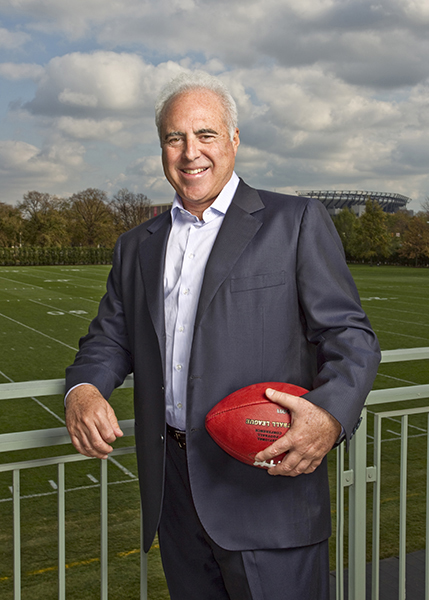
15. **An Enduring Legacy: Honoring a Life of Compassion**Jim Murray’s life was an extraordinary tapestry woven with threads of sporting triumph, entrepreneurial spirit, and profound humanitarianism. His dual legacy, as the architect of the Eagles’ first Super Bowl team and the co-founder of Ronald McDonald House Charities, firmly established him as a seminal figure in Philadelphia and far beyond. His tireless efforts and selfless dedication continue to resonate, long after his passing, serving as an enduring source of inspiration.
The Ronald McDonald House in Philadelphia, recognizing his pivotal role and unwavering commitment, has established an award in his name. This honor serves to highlight individuals who exemplify the spirit of service and dedication to the well-being of others, ensuring that Murray’s ethos of compassion continues to inspire future generations to engage in similar acts of generosity. Jeffrey Lurie, Chairman and CEO of the Philadelphia Eagles, eloquently captured his lasting impact, stating, “His lifetime of contributions has certainly left a lasting impact on the Eagles family and the greater Philadelphia community.”
Reflecting on his life’s work, particularly the founding of the charity, Mr. Murray articulated his philosophy with characteristic humility and insight. He often said the charity was “no more than ‘putting people together that can hold hands, hold hearts and say, you know what, we’re on defense, but you can’t win without a good defense.’” This profound statement encapsulated his belief in the power of collective human connection and mutual support as the strongest defense against life’s adversities. It was his genius to formalize this innate human impulse into a globally recognized institution.
As we reflect on the remarkable life of Jim Murray, his indelible mark on both professional sports and global philanthropy becomes ever clearer. His vision for a revitalized Eagles team and his compassionate response to the plight of sick children and their families created institutions that continue to thrive and serve. In honor of his profound legacy, those wishing to contribute to the ongoing mission he championed may make gifts to support the Ronald McDonald House in Philadelphia, either by mail to 3925 Chestnut St, Philadelphia, PA 19104 or online at www.rmhcphilly.org/jimmymurray. His spirit of service, empathy, and community continues to guide and inspire, ensuring that his ‘McMiracle’ endures for generations to come.
Read more about: Unspoken Grief: The Definitive Account of Matthew Perry’s Death, Its Aftermath, and the Unraveling of a Supply Network
The indelible mark left by Jim Murray on the city of Philadelphia and indeed, the world, transcends the boundaries of any single profession or endeavor. His life serves as a powerful testament to the impact one individual can have when driven by integrity, strategic vision, and an unwavering commitment to the welfare of others. From the sidelines of the NFL to the quiet comfort of a Ronald McDonald House, Murray’s legacy is a shining example of how professional success and profound compassion can intertwine to create a lasting, benevolent force for good. He was, truly, a man who built more than teams and houses; he built communities of care and hope.

